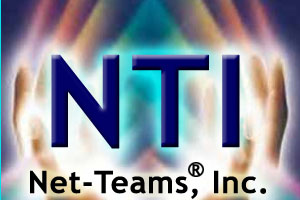 |

Leadership Talent: Winning The Succession Wars |
 | 3 |
|
|
|
Submitted by Theodore Heisenberg
| RSS Feed
| Add Comment
| Bookmark Me!
The demand for leadership talent greatly exceeds supply. If economic growth continues at a modest 2 percent for the next 15 years, there would be a need for one-third more senior leaders than there are today. Who will replace your retiring executives, and how will you keep your company's leadership pipeline full?
The demand for leadership talent greatly exceeds supply. If economic growth continues at a modest 2 percent for the next 15 years, there would be a need for one-third more senior leaders than there are today.
Baby boomers have already started to retire. Most large companies will have to scramble to meet gaps in senior leadership talent. Who will replace your retiring executives, and how will you keep your company's leadership pipeline full?
To make matters worse, the global and more dynamic economy of the 21st century requires executive talent with a more complex skill set:
* Greater technological literacy
* A sophisticated understanding of global marketplaces
* Multicultural fluency
* Relationship savvy, with extensive networks of alliances and stakeholders
* Leadership skills over a delayered, disaggregated and virtual organization
Succession Planning in the 21st Century
In response to these challenges, organizations have a renewed interest in succession planning systems. While these systems functioned merely as replacement charts in the past, and were HR executives' function, there are two critical differences today, emphasizing:
1. Leadership development at all levels (not just senior executives)
2. Responsibility and involvement for leadership development within the work group, with the person's manager and team members (and no longer an HR function)
Distinct Leadership Levels
Most development models fail to consider leadership requirements at all levels. As a person is promoted from line manager to business manager to functional manager, skills and requirements change.
Companies mistakenly focus on leadership traits, styles and technical competence. They commit a major error when promoting successful individuals without acknowledging required skill set differences at different levels of leadership responsibilities.
The Leadership Pipeline
Hiring gifted people makes sense as a tactic, but not a strategy. Companies need to build leaders, not buy them. Research and experience demonstrate that potential is not fixed.
The more people achieve, the more they learn. Their willingness to tackle new challenges increases. To capitalize on potential, companies must define the true work requirements at each key leadership level. Succession planning systems must spell out what's needed to make a successful transition from one layer of leadership responsibility to the next.
Succession Planning to Fill the Pipeline
The following five-step plan will facilitate succession planning:
1. Tailor a leadership pipeline model to fit your organization's succession needs.
2. Clarify standards for performance and potential, in your own language.
3. Document and communicate these standards throughout the organization.
4. Evaluate succession candidates through a combined potential-performance matrix.
5. Review plans and progress of the entire pipeline frequently and seriously.
|
|
 |

|
|
LinkedIn Recommendation:
 Roxie Thomas - Project Management at Prism Technologies Inc - Teo Graca is an expert in SEO, Internet Marketing, and develops complete systems that do everything for the online marketer. I recommend Teo's online system to anyone who needs more leads, prospects, and customers. - January 14, 2011, Roxie worked directly with Teo at Net-Teams, Inc. Roxie Thomas - Project Management at Prism Technologies Inc - Teo Graca is an expert in SEO, Internet Marketing, and develops complete systems that do everything for the online marketer. I recommend Teo's online system to anyone who needs more leads, prospects, and customers. - January 14, 2011, Roxie worked directly with Teo at Net-Teams, Inc. |
|
Featured [Leadership] Articles:
|
 |
